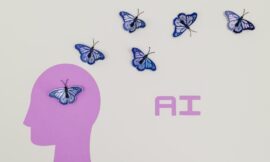Artificial intelligence does not go by a day that does not bring news and in this case with its own name: AutoGPT, a new open source application based on GPT-4 that wants to improve the current ChatGPT.
Advances in artificial intelligence continue and it’s time to introduce AutoGPT, which, simply put, represents the next leap in AI technology, harnessing the power of OpenAI’s recent GPT-4 language model to perform a wide range of tasks. —yes, beyond the basic ChatGPT—.
AutoGPT is an innovative and ambitious application that pushes the limits of what is possible with artificial intelligence. It demonstrates how GPT-4 can be used for various tasks and how it can work independently without human guidance – without those purist filters.
According to the GitHub page, these are the new features of AutoGPT:
- Internet access for searches and information gathering
- Long-term and short-term memory management (allows you to store and retrieve task-relevant information thanks to ElevenLabs and ImageGen)
- Using GPT-4 for text generation
- Access to popular websites and platforms
- File Storage and Summary with GPT-3.5
What is AutoGPT and how does this new AI tool work?
AutoGPT is an open source experimental application —created by developer Toran Bruce Richards—that demonstrates the capabilities of the chatGPT-4 language model. This innovative artificial intelligence system pushes the limits of what is currently possible, allowing users to take advantage of the capabilities that OpenAI text tools have, but now to perform enhanced tasks.
AutoGPT works by taking a set of keywords or phrases as input and generating a weighted, consistent text output, just like ChatGPT. It uses a novel keyword insertion mechanism that guides the generation process and ensures that keywords are used correctly in the text.
Something quite important to highlight is that AutoGPT can learn from its own experiences and comments and will improve its performance over time.
Of course, the only problem —if that’s how you see it— is that it doesn’t have much of a filter. In the end, this tool is proceeding independently—and that’s its big differentiating point—to achieve the user’s goals without caring too much about the purist consequences that have been built into some tools like Bard, Bing, or ChatGPT itself.
The problem comes when it is said that having AutoGPT on your computer is not an easy task and perhaps —maybe you are an erudite with programming— you need someone who understands Python. To use AutoGPT, you must have Python 3.8 or higher.
You must also have a valid OpenAI API key, which you can easily obtain, and a Pinecone API key. The text-to-speech plugin also requires an ElevenLabs API.
Has Artificial General Intelligence been achieved with AutoGPT?
AutoGPT claims to be able to learn any task without human supervision by using a large and diverse data set of web pages as training data. But does AutoGPT qualify as artificial general intelligence (AGI)? The answer to clear any doubt is no, it is not about AGI.
For context, although there is a video below that explains it in depth, the AGI refers to a hypothetical level of artificial intelligence that can perform any intellectual task that a human being can. It is considered the ultimate goal of AI research, since it would allow machines to understand and reason about the world in a way that is already the same as humans.
AutoGPT does not have any further knowledge, emotions or representation of the world, nor does it have goals or motivations. It simply learns to mimic the patterns and statistics of natural language text from your training data.
With all this, it only remains to say that AutoGPT is an impressive —although also young— and powerful model for natural language generation, which can even fool some humans with its texts. However, for now you can’t really understand them or communicate with them in a meaningful way.


